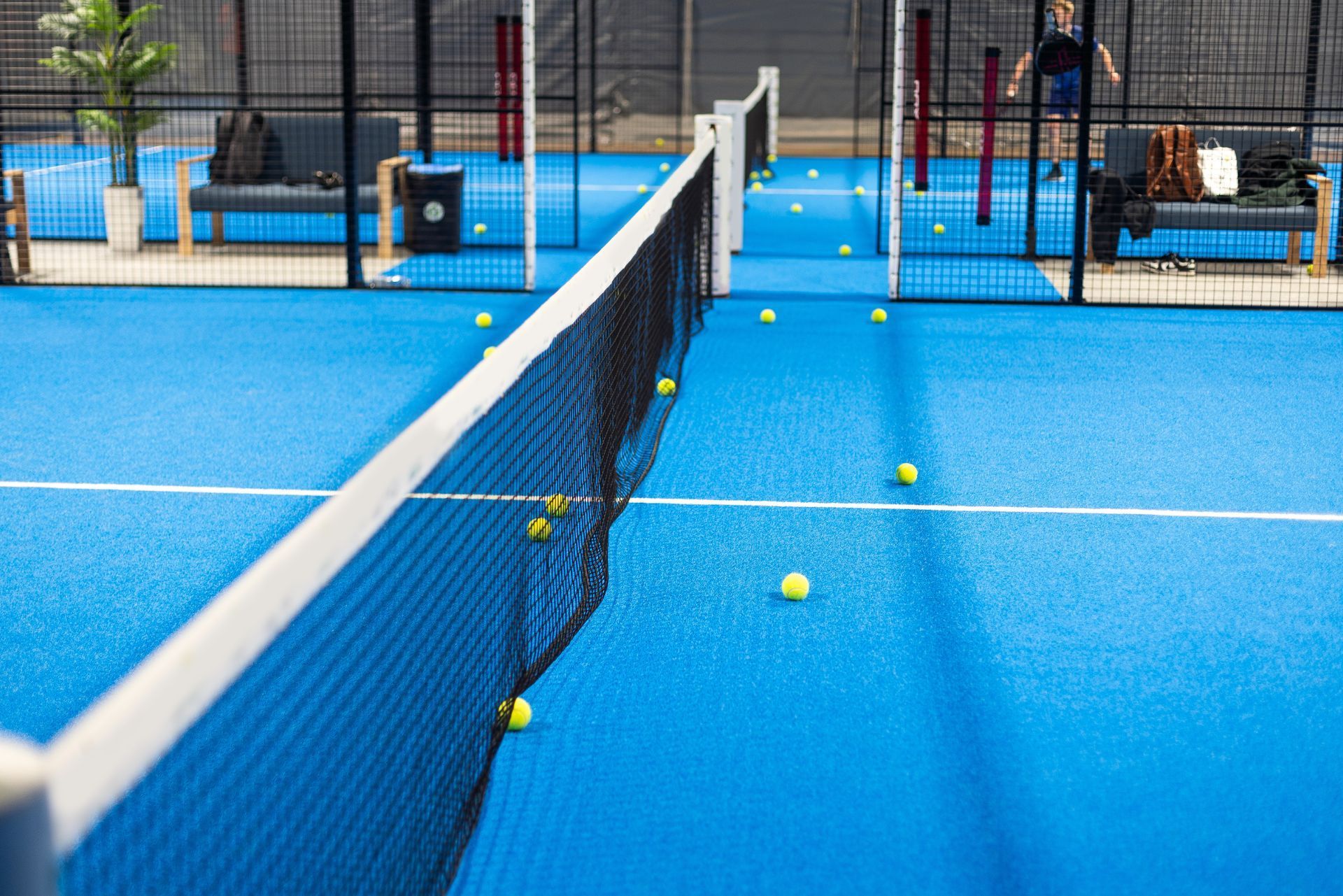Top 3 Recommended Policies

New York’s pickleball scene is booming, with demand for courts skyrocketing in recent years. The state faces the challenge of building over 3,500 new courts in the next five to seven years, requiring an investment exceeding $124 million to keep pace with players’ enthusiasm. This rapid expansion brings exciting opportunities but also raises critical questions about protecting facilities from liability and property risks. Understanding insurance coverage tailored to pickleball venues is essential for operators navigating this fast-growing market. New York’s pickleball court demand reflects a nationwide trend that demands careful risk management.
Why Liability Coverage Is Crucial for Pickleball Facilities
Pickleball is a physically engaging sport, attracting a diverse range of players, especially older adults. Over half of avid participants are aged 55 or older, with nearly a third over 65. This demographic enjoys the game but also faces a higher risk of injuries, which makes liability coverage a top priority for facility owners.
Injuries can range from minor sprains to more serious incidents requiring emergency care. A recent study estimates that pickleball-related injuries in the U.S. lead to hundreds of thousands of outpatient visits and thousands of hospitalizations annually. This volume of injuries underscores the importance of having a robust liability insurance policy that protects the facility from costly claims.
Adrian Montoya, co-founder of Eastside Paddle Club, highlights the importance of requiring players to sign liability waivers. These forms acknowledge the inherent risks associated with physical activity and help mitigate legal exposure. While waivers do not eliminate risk entirely, they are a critical component of a comprehensive liability mitigation strategy. Liability waivers and mitigation are practical steps in managing risk.
Types of Liability Coverage to Consider
General liability insurance covers bodily injury and property damage claims made by third parties. For pickleball facilities, this means protection against lawsuits stemming from player injuries on the courts or accidents in common areas. Professional liability insurance may also be relevant if coaching or training services are offered, covering claims related to negligence or errors in instruction.
Given the sport’s popularity among older adults, some insurers are cautious about offering coverage. Shawn Munns, an insurance agent familiar with the pickleball market, notes that many carriers hesitate due to the higher injury risk in this age group. This makes it even more important for facility owners to work with agents who understand the nuances of pickleball and can tailor policies accordingly. Insurance challenges in pickleball highlight the need for specialized expertise.
In addition to traditional liability coverage, pickleball facilities should also consider additional protections such as umbrella insurance. This type of policy provides an extra layer of security by extending coverage limits beyond what standard policies offer, which can be particularly beneficial in the event of severe accidents that lead to significant claims. Furthermore, facilities may want to explore coverage for equipment and property damage, ensuring that all aspects of their operations are safeguarded against unforeseen incidents.
Moreover, the implementation of safety protocols can play a pivotal role in reducing liability risks. Facilities can invest in regular maintenance of courts, provide adequate signage regarding safety rules, and offer training sessions for staff and players on injury prevention techniques. By fostering a culture of safety and awareness, pickleball facilities not only protect their players but also enhance their reputation as responsible and caring organizations within the community.

Protecting Property: What Pickleball Facilities Need to Know
Property insurance is another pillar of protection for pickleball venues. Facilities often include courts, lighting, seating, clubhouses, and sometimes retail or food service areas. Each of these assets faces risks from weather damage, vandalism, fire, or equipment breakdown.
In New York, seasonal weather fluctuations can pose significant threats to outdoor courts and infrastructure. Facilities must ensure their property insurance covers these risks adequately. This coverage typically includes repair or replacement costs for damaged structures and equipment, helping facilities recover quickly from unexpected events. Additionally, facilities should consider the potential impact of natural disasters, such as hurricanes or heavy snowfalls, which can lead to extensive damage and costly repairs. Implementing preventive measures, such as proper drainage systems and reinforced structures, can mitigate some of these risks and may even lead to lower insurance premiums.
The Oliver L.E. Soden Agency emphasizes the importance of comprehensive property insurance combined with general liability and workers’ compensation coverage. Workers’ comp is essential if the facility employs staff for maintenance, coaching, or administration. This trio of coverages forms the backbone of a strong insurance program for pickleball operations. Tailored insurance solutions for pickleball demonstrate how specialized policies protect facilities. Moreover, facilities should regularly review their insurance policies to ensure they remain aligned with the evolving needs of the venue, especially as they expand or upgrade their amenities.
Balancing Coverage and Cost
Insurance premiums for pickleball facilities can be affected by several factors, including location, facility size, and player demographics. The rapid growth in New York means many new venues are entering the market, which can influence pricing and availability of coverage.
Some insurers remain cautious due to the sport’s injury profile, especially since many players are older adults. This can lead to higher premiums or limited coverage options. Facility owners should work closely with insurance professionals to find balanced policies that provide adequate protection without overextending budgets. Additionally, implementing safety measures such as regular court maintenance, proper signage, and player education programs can not only enhance the overall experience but may also lead to reduced premiums over time. By fostering a culture of safety, facilities can demonstrate their commitment to risk management, which can be appealing to insurers and ultimately beneficial for the bottom line.
Understanding the Impact of Pickleball Injuries on Insurance
Pickleball’s popularity among older adults contributes to a unique injury profile. According to a UBS study, the sport is expected to generate between $250 million and $500 million in healthcare costs this year alone. This includes 366,000 outpatient visits and thousands of emergency room trips and hospitalizations nationwide. The nature of the injuries often ranges from minor sprains and strains to more severe conditions such as fractures, particularly in the wrist and ankle, which can lead to significant recovery times and medical expenses.
These figures highlight the real risks associated with the sport and the potential financial exposure for facility operators. Insurance carriers factor these statistics into their underwriting decisions, influencing coverage availability and terms. As the sport grows, so does the need for comprehensive data on injury patterns, which can help insurers better understand the risks involved. This data-driven approach is crucial for developing tailored insurance products that cater specifically to pickleball facilities, ensuring that they are adequately protected against the financial repercussions of injuries.
Facilities must consider these risks when designing their liability and property insurance programs. Proactive risk management, such as enforcing safety protocols and requiring waivers, can help reduce claims and improve insurer confidence. Additionally, facilities may benefit from investing in training programs for staff and players alike, focusing on injury prevention techniques and proper equipment usage. This not only fosters a safer playing environment but also enhances the overall experience for participants, making the sport more enjoyable and sustainable.
How Risk Management Supports Insurance Stability
Implementing a clear liability mitigation strategy is more than just paperwork. It involves educating players about safe play, maintaining courts to prevent hazards, and responding promptly to incidents. These actions demonstrate to insurers that the facility is committed to minimizing risks, which can lead to better coverage terms. Regular safety audits and player feedback can also play a vital role in identifying potential risks before they result in injuries, thus reinforcing the facility's proactive stance on safety.
Eastside Paddle Club’s approach, including mandatory liability waivers and safety guidelines, serves as a model for other venues. Combining operational best practices with tailored insurance coverage creates a resilient foundation for long-term success. Moreover, fostering a community atmosphere where players feel comfortable discussing their experiences and concerns can lead to a more engaged membership base. This sense of community not only enhances player retention but also contributes to a culture of safety, where everyone is invested in maintaining a secure and enjoyable environment for all participants.
Pickleball facilities require a mix of insurance lines to address their unique risks. Here is a breakdown of essential coverage types:
| Coverage Type | What It Covers | Why It Matters for Pickleball Facilities |
|---|---|---|
| General Liability | Bodily injury, property damage, and legal defense costs | Protects against lawsuits from player injuries or accidents on-site |
| Professional Liability | Claims of negligence or errors in coaching or instruction | Important if offering lessons or training programs |
| Property Insurance | Damage to buildings, courts, equipment, and contents | Covers repair or replacement costs from weather, fire, or vandalism |
| Workers’ Compensation | Medical and wage benefits for employee injuries | Required if hiring staff for facility operations or coaching |
| Business Interruption | Lost income due to covered property damage | Helps maintain cash flow during repairs or closures |
This combination addresses the most common exposures faced by pickleball facilities. As the sport grows, additional coverages such as cyber liability or event insurance may become relevant, especially for larger venues or clubs hosting tournaments.
Moreover, as pickleball continues to gain popularity, facilities may also consider investing in specialized insurance for equipment rentals and recreational activities. This can include coverage for items such as paddles, balls, and nets, which are often rented out to players who may not have their own gear. Additionally, facilities that host social events, leagues, or tournaments should look into event cancellation insurance to protect against unforeseen circumstances that could disrupt planned activities, such as inclement weather or public health concerns.
Furthermore, it is crucial for pickleball facility owners to stay informed about the evolving landscape of insurance regulations and requirements specific to New York. Engaging with an insurance broker who specializes in sports facilities can provide tailored advice and ensure that all aspects of the business are adequately protected. This proactive approach not only safeguards the facility's assets but also enhances the overall experience for players and visitors, fostering a safe and enjoyable environment for everyone involved.

What New York Facility Owners Should Keep in Mind
Building thousands of new courts in New York means many new operators will enter the market. Understanding insurance needs early can prevent costly surprises down the road. Facilities must balance growth ambitions with prudent risk management and insurance planning.
Working with insurance agents who specialize in sports and recreational facilities is key. These professionals understand the nuances of pickleball’s risk profile and can help tailor policies that fit each venue’s unique circumstances.
New York’s climate, the age of the player base, and the scale of investment all influence insurance requirements. Facilities should also stay informed about regulatory changes and industry trends to maintain compliance and protection.
For more insight into insurance challenges faced by pickleball facilities, the Insurance Journal article on Florida’s market offers a useful perspective on how insurers are adapting to this growing sport.
Wrapping Things Up: Protecting Your Pickleball Facility
Pickleball’s surge in popularity brings exciting opportunities for New York’s sports and recreation industry. Yet, with rapid growth comes increased responsibility to manage risks effectively. Liability and property insurance form the foundation of this protection, safeguarding facilities against injury claims and property damage.
Facility owners should prioritize a comprehensive insurance program that includes general liability, property coverage, and workers’ compensation. Implementing risk mitigation strategies like player waivers and safety protocols complements insurance and can improve coverage terms.
Staying informed about the sport’s demographics and injury trends helps anticipate insurance challenges. With over half of avid players aged 55 or older, understanding the unique risks of this population is crucial for maintaining a safe environment and securing reliable insurance.
Choosing the right insurance partner who knows the pickleball market can make all the difference. Tailored coverage ensures your investment is protected so you can focus on growing your community and serving players.
Frequently Asked Questions
Q: Do pickleball facilities need general liability insurance?
A: Yes. General liability insurance protects against claims from injuries or property damage occurring on the premises.
Q: How can facilities reduce liability risks?
A: Requiring players to sign liability waivers, maintaining safe courts, and enforcing safety rules all help reduce risks and potential claims.
Q: Is property insurance necessary for outdoor pickleball courts?
A: Absolutely. Property insurance covers damage from weather, vandalism, or accidents affecting courts and related structures.
Q: Why do some insurers hesitate to cover pickleball facilities?
A: The sport’s popularity among older adults, who have a higher injury risk, leads some carriers to be cautious or charge higher premiums.
Q: What other insurance coverages might a pickleball facility need?
Depending on operations, professional liability, workers’ compensation, and business interruption insurance may be important additions.
Q: How does New York’s growth in pickleball courts affect insurance?
The rapid expansion increases demand for coverage and may impact pricing, making specialized insurance advice essential for new facilities.
Contact Us
Phone
Location
